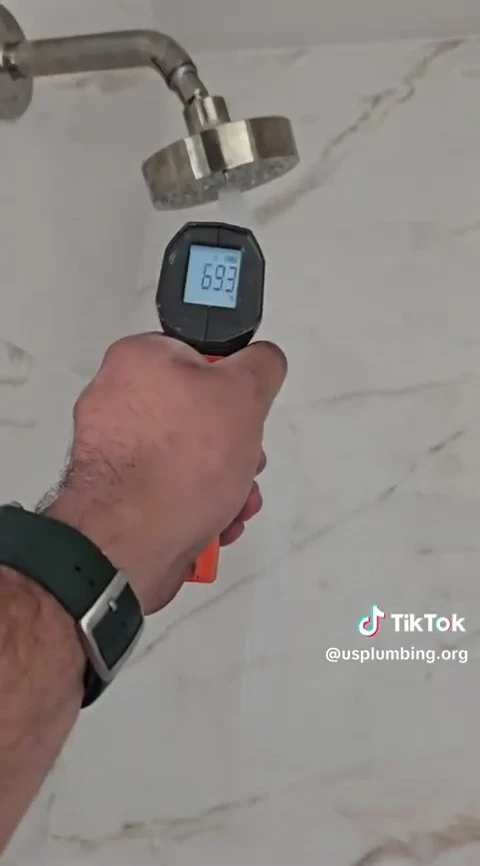Tankless water heaters have surged in popularity, promising the convenience of endless hot water. However, the reality often falls short of this marketing hype. This comprehensive review delves into the pros and cons of tankless systems, examining whether the benefits truly outweigh the drawbacks for the average homeowner. We'll explore the frequently reported issue of significant wait times for hot water, especially in larger homes, and analyze how this delay impacts the user experience. We will also investigate how factors such as home size, pipe length, and water pressure influence performance.This in-depth analysis will dissect the claims surrounding instant hot water delivery, comparing the performance of tankless systems against traditional tank water heaters. We'll examine potential solutions to mitigate the common complaints, such as recirculation pumps and multiple unit installations, and weigh their costs and benefits. Ultimately, we aim to equip you with the knowledge to make an informed decision, ensuring your choice aligns perfectly with your specific needs and home configuration. By focusing on practical performance and realistic expectations, this review will help you determine if a tankless water heater is the right investment for your home.
Pros And Cons
- Efficient for filling bathtubs quickly in smaller homes with multiple occupants where hot water demand is consistently high.
- Can be effective in small houses.
- Significant delay in hot water delivery to fixtures far from the unit, even on the hottest setting.
- May require a long wait time (2 minutes or more) for hot water at distant fixtures.
- Water temperature can fluctuate and cool down quickly, especially at fixtures far from the unit.
- Can lead to customer dissatisfaction if not properly explained and understood.
Read more: Nuwave PIC Titanium Induction Cooktop Review: A Mixed Bag of Features
The Initial Drawback: Distance and Water Temperature
Many people are misled by the marketing surrounding tankless water heaters. The promise of instant hot water is often overstated, especially in larger homes. The distance from the water heater to the furthest fixture significantly impacts the time it takes for hot water to arrive. This delay can be frustrating for users accustomed to a tank-style heater's immediate hot water delivery.

In a test, hot water took over a minute to reach a fixture furthest from the unit, even on the hottest setting. The temperature initially hovered around lukewarm before gradually increasing. This initial wait is a significant drawback for many homeowners, especially during peak usage times.

This delay isn't just about inconvenience; it highlights a fundamental misunderstanding of how tankless systems operate. They don't preheat a large volume of water; instead, they heat on demand. This requires sufficient time for the water to travel, be heated, and reach the desired tap.

The Tankless Water Heater's Performance in Different Scenarios
While tankless heaters struggle with long distances, they excel in specific situations. Filling a bathtub, for example, benefits from the continuous hot water supply. The constant heating means the tub fills much quicker than with a traditional tank heater which would eventually run out of hot water.

However, for smaller households with shorter distances between the heater and fixtures, this drawback is minimized. The overall experience is more positive in these instances, highlighting the importance of considering home size and layout.

The initial wait time for hot water remains a key concern. The speed at which the water heats up can vary based on factors such as water pressure and the unit's settings.

Addressing Common Complaints and Potential Solutions
The most frequent complaint about tankless water heaters is the wait time for hot water. Homeowners often expect instant hot water and are disappointed by the delay. This dissatisfaction arises from mismatched expectations and a lack of understanding about how tankless systems function.

Some tankless models incorporate recirculation pumps to mitigate this issue. These pumps continuously circulate hot water, reducing wait times, but they add complexity and increase energy consumption.

Alternatively, installing multiple tankless units, one constantly running, can resolve the issue completely. However, this dramatically increases the initial investment and ongoing operating costs.
The Verdict: Tankless Heaters - Who Are They For?
Tankless water heaters are not a one-size-fits-all solution. For smaller homes or apartments with shorter pipe runs, the convenience and efficiency are undeniable. But for larger homes, unless substantial modifications are made (like installing a powerful recirculation pump), the long wait times and potential for user frustration outweigh the benefits.

The marketing around instant hot water often misrepresents the technology. While efficient in smaller spaces, a tank system with a recirculation pump often provides a better user experience for most larger homes, even though the initial cost might be higher.

Ultimately, careful consideration of home size, pipe layout, and individual needs is crucial before investing in a tankless water heater. Don't be swayed by marketing; focus on what best suits your specific circumstances.

